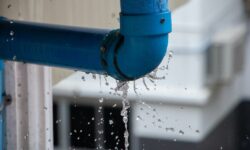Audio 101: Know These Terms for Max Intelligibility
Technical expert Bob Dolph has noticed much confusion surrounding audio terminology, so he put together this guide to help you spec notification systems.

Over the past decade it has been interesting watching the emergence of digital technologies. Wherever anyone looks these days in our industry you will see the term IP (Internet protocol) attached to device communications.
Many young technicians have been weaned on using networks and digital technology. However, there is also another technology, much older than any digital technology … of course, I’m referring to analog technology.
Recently I attended the big commercial A/V tradeshow, InfoComm, held here in Orlando, Fla. I also audited some of the fine technical educational sessions offered by show producer AVIXA (Audiovisual and Integrated Experience Association).
I noticed a common pattern that has also been reflected in many security industry conferences — the ongoing challenge to provide skills education so all technicians have a solid and equal understanding of both digital and analog technologies.
Hopefully everyone understands that the analog technology using both sound and sight will be around forever. This month let’s focus on understanding and demystifying audio terminology.
Over the years I have noticed much confusion surrounding this terminology. It’s important to know, though, so that one can correctly specify and test the operation of notification appliances used in fire, burglary and mass notification systems.
I can recall people commenting that they were not impressed when reviewing audible device specifications as stating one device having only a 3dB (decibel) increase in power over another similar device. One must remember that sound measurement uses not the linear but the logarithmic decibel scale. This is how we hear in nature. In the example above a 3dB power increase actually would double the sound amplitude.
Including decibel, here are some more mysterious audio terms:
- Decibel (dB) — A unit of measurement that typically uses a base-10 or base-20 logarithmic ratio between two num-bers. They can be used to quantify relationships in voltage, distance and sound pressure as they relate to power.
- Sound power level (SWL) — The sound energy constantly transferred from the sound source or notification appliance. It is a “20 log” decibel calculation, while most other sound decibel calculations are “10 log.” One particularly important note to keep in mind, this value is distance independent and should not be confused with distance dependent readings such as sound pressure level.
- Sound pressure level (SPL) — This measures the loudness of the sound. How far a person is from an emergency notification device will also impact how loud the alarm tone or message is heard. SPL will always be influenced by the distance from the alarm notification device or if doors are closed. For techs it is a decibel reading and is referenced to the quietest sound the human ear is capable of hearing which is 0dB SPL. The Inverse Distance Law (1/r) is utilized and states that if you cut the distance in half, the SPL will be 6dB higher and vice versa; this is what is measured on a field SPL meter.
- Sound intensity level (SIL) — Power carried by sound waves per unit area. I wanted to mention it here as SIL is often confused and equated to SPL. It is NOT the same physical quantity as sound pressure. SIL follows the Inverse Square Law (1/r²), which, again, you’ll find referenced incorrectly in SPL measurements.
Have you ever found yourself asking, “What was that?” after listening to a message announced over a public address (PA) speaker system? Now imagine this garbled message is a fire or active shooter announcement? It could mean lives being lost. Intelligibility has taken high priority for announcements coming from alarm notification appliances.
NFPA 72, “National Fire Alarm and Signaling Code,” now requires audio notification not only be loud enough but clear enough when including voice commands. While the process of testing for comprehensible speech can be quite technical, a common standard of measurement involves procedures such as speech transmission index (STI) and speech transmission index for public address systems (STIPA).
Some SPL testers now have the option of including STIPA testing that meets many AHJ inspection requirements per NFPA 72 (see Tool Tip below). A good reference source for more information is the “Fire Alarm Audio Applications Guide” published many years ago from Tyco Safety Products and available as a PDF download.

Tool Tip
The demands for STIPA testing have increased with more use of voice evacuation systems. That’s why I have selected a good example of today’s speech intelligence testing equipment with the Bedrock SM50 Speech Intelligibility Meter. It features a color touchscreen and with its v2.0 software update can now conduct full STI tests in as little as 65 seconds, according to Bedrock USA.
The SM50 offers two STIPA measuring modes; a quick screening mode and more comprehensive “pro” mode, the company says.
If you enjoyed this article and want to receive more valuable industry content like this, click here to sign up for our FREE digital newsletters!

Security Is Our Business, Too
For professionals who recommend, buy and install all types of electronic security equipment, a free subscription to Commercial Integrator + Security Sales & Integration is like having a consultant on call. You’ll find an ideal balance of technology and business coverage, with installation tips and techniques for products and updates on how to add to your bottom line.
A FREE subscription to the top resource for security and integration industry will prove to be invaluable.








